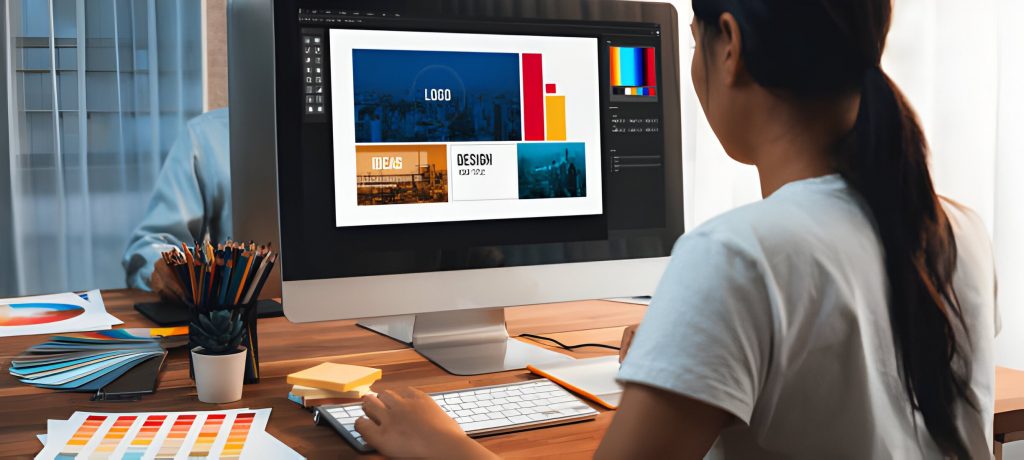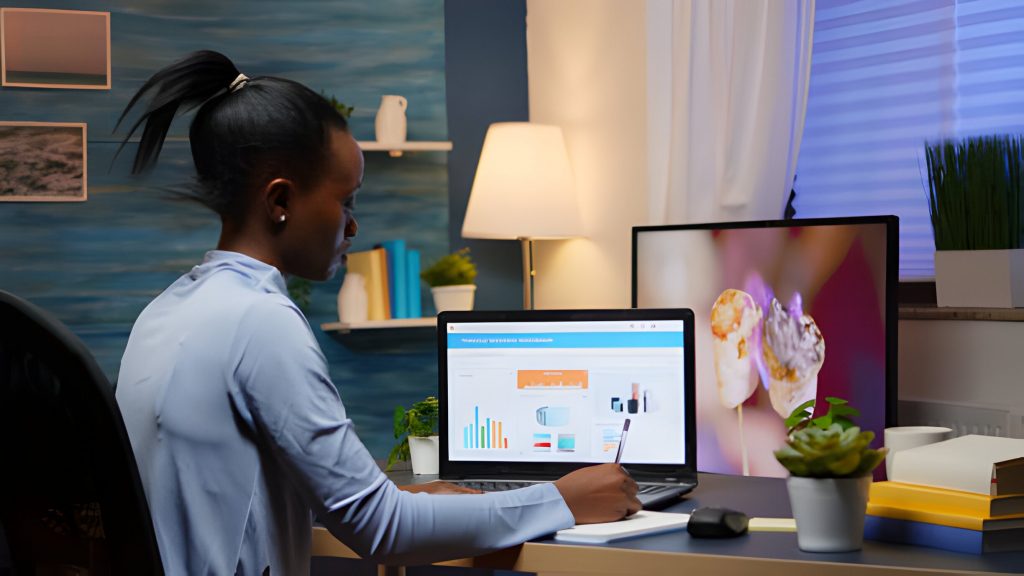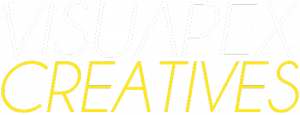Graphic design is a creative field that combines artistry with technology. It involves using visual elements to convey messages and ideas. Graphic designers utilize specialized software to bring their concepts to life, whether in physical or digital form. Their work plays a crucial role in various areas such as digital marketing, brand development, and data visualization. The opportunities within this profession are vast, ranging from crafting logos and websites to producing promotional materials.
Why discuss the pros and cons of being a graphic designer?
It’s essential for aspiring graphic designers to have a comprehensive understanding of both the advantages and disadvantages. This knowledge empowers them to make well-informed decisions about their career path.
While being a graphic designer comes with many perks like decent income potential and the ability to work remotely, there are also drawbacks such as the subjective nature of design and prolonged computer usage.
By carefully considering these factors, individuals can determine if this profession aligns with their personal and professional aspirations.
When it comes to building websites as a graphic designer, understanding website content is crucial.
However, another important aspect that should not be overlooked is SEO. Mastering SEO can significantly enhance the visibility of websites on search engines, leading to increased traffic and better reach for your designs. A comprehensive guide on SEO strategies including keyword optimization, backlinking techniques, and local SEO mastery can truly transform your designs into search engine champions!”
Advantages of Being a Graphic Designer
1. Decent Income
Earning a good income is one of the primary advantages of being a graphic designer. The profession offers the potential to achieve a stable and lucrative career. According to the U.S. Bureau of Labor Statistics, the mean annual wage for graphic designers in 2018 was approximately $54,680. This figure highlights that many individuals in this field can enjoy a comfortable living.
Several factors contribute to the income potential in graphic design:
● Experience: As with many professions, experience plays a crucial role in determining salary. Seasoned designers often command higher wages compared to their less experienced counterparts.
● Industry: Working in specialized industries like advertising, public relations, or digital media can result in higher pay due to the demand for high-quality visual content.
● Location: Geographic location significantly impacts salary levels. Designers in urban areas or tech hubs tend to earn more than those in rural settings.
Freelancing also presents an opportunity for graphic designers to boost their income. By taking on multiple projects and clients, freelancers can potentially exceed the average earnings of salaried employees.
Remote work has become increasingly prevalent, offering flexibility and additional income avenues. For instance, agencies like Visuapex Creatives specialize in website design, SEO, and social media marketing, allowing designers to collaborate on diverse projects from anywhere.
2. Creative and Analytical Brain Parts
Graphic design uniquely blends creativity with analytical skills. This duality appeals to individuals who enjoy challenging both hemispheres of their brain.
● Creativity: Designers get to explore artistic expression through various media, including digital graphics, illustrations, and typography.
● Analytical Skills: Effective design requires understanding user behavior, market trends, and technical constraints. Analyzing data helps create designs that are not only visually appealing but also functional and user-friendly.
This combination ensures that work remains engaging and varied, providing continuous opportunities for personal growth and satisfaction.
3. Highly Coveted Skills
The skill set of a graphic designer is highly sought after across numerous industries:
● Marketing: Visual content is critical for campaigns.
● Branding: Companies require unique logos and brand identities.
● Tech: Web and app design demand skilled graphic designers.
Such demand ensures job security and diverse employment opportunities.
4. Steady Demand
In today’s digital world, graphic design skills are consistently needed:
● Web Design Trends: Keeping up with the latest web design trends ensures relevancy in an ever-evolving landscape.
● Social Media Content Marketing: Graphics play a pivotal role in social media content marketing.
This steady need contributes to long-term job prospects.
5. Work from Home Opportunities
Graphic designers often enjoy flexible work arrangements:
● Freelance Projects: Many designers choose freelancing for its autonomy.
● Remote Jobs: Companies increasingly offer remote positions due to technological advancements.
Flexibility enhances work-life balance and job satisfaction while expanding job opportunities globally.
6. Creative and Analytical Brain Parts
Graphic design combines both creative and analytical skills, making it an attractive career choice for those who enjoy versatility. As a graphic designer, you can create visually appealing designs that grab attention and effectively communicate messages. This creative aspect allows you to play around with colors, fonts, images, and layout to create stunning visuals.
At the same time, graphic design also requires strong analytical abilities. Successful designs involve understanding the target audience, market trends, and usability principles. You must analyze client requirements, accurately interpret project briefs, and develop solutions that align with business objectives. This combination of using both creative and analytical skills can be extremely fulfilling.
Some of the benefits of being a graphic designer are:

● Creative Freedom: Having the freedom to create unique visual content that stands out.
● Analytical Problem-Solving: Being able to solve design problems strategically based on data and research.
● Skill Development: Continuously improving both artistic and technical skills.
For those who are passionate about merging art with strategy, graphic design provides an enriching career path. The ability to engage both sides of your brain not only increases job satisfaction but also keeps your work interesting and stimulating.
In addition to these aspects, graphic designers also have the opportunity to explore other related fields such as community management and influencer marketing. These areas complement graphic design by utilizing similar skill sets while offering diverse opportunities for professional growth. Whether it’s managing online communities or leveraging the power of influencers for brand promotion, these extensions broaden the scope of a graphic designer’s career while tapping into their existing strengths in creativity and analysis.
7. Highly Coveted Skills
In the digital age, the demand for graphic designers is consistently high across various industries. Companies recognize the value of visually engaging content for marketing, branding, and communication purposes. As a graphic designer, your skills are highly sought after, giving you an edge in the job market.
Graphic designers possess a unique blend of technical expertise and creative flair. This combination makes them indispensable in sectors like:
● Advertising and Marketing: Creating compelling visuals to attract and engage customers.
● Web Development: Designing user-friendly websites with aesthetic appeal.
● Branding: Crafting logos, business cards, and other brand identity materials.
Your ability to transform concepts into visual reality is a powerful tool that businesses cannot overlook. The versatility of graphic design skills means you can work in diverse environments from start-ups to large corporations.
For example, understanding SEO basics can significantly enhance your design’s effectiveness by ensuring visibility on search engines. Similarly, knowledge of brand marketing strategies ensures that your designs align with broader business goals, creating a cohesive brand identity.
The consistent need for skilled designers underscores the advantages of being a graphic designer, making it a compelling career choice for those with a passion for both art and technology.
8. Steady Demand
The steady demand for graphic designers is a significant advantage of pursuing this career. In today’s digital world, businesses and brands constantly need skilled professionals to create visually appealing and effective designs. From marketing materials to user interfaces, the role of a graphic designer is indispensable.
Several factors contribute to this consistent demand:
1. Digital Marketing: The rise of digital marketing has heightened the need for engaging visuals that capture attention and convey messages effectively. Digital marketing blogs like those found on Visuapex Creatives provide valuable insights into various aspects of the industry, including the importance of graphic design in enhancing online presence.
2. Brand Identity: Establishing a strong brand identity requires cohesive and professional design elements. Graphic designers play a crucial role in creating logos, color schemes, and other branding materials.
3. Content Creation: With the surge in content creation across various platforms like social media, websites, and blogs, there’s an ever-growing need for custom graphics and illustrations.
4. User Experience (UX) Design: The design of user interfaces for websites and applications directly impacts user experience. Skilled graphic designers are essential for crafting intuitive and aesthetically pleasing interfaces.
This consistent demand not only offers job security but also presents opportunities for freelance work and diverse projects. The versatility in roles—from working with startups to established corporations—ensures a dynamic career path.
The steady demand for graphic designers also highlights the importance of skills beyond design itself. For example, knowledge of off-page SEO can greatly enhance a designer’s value by contributing to better website visibility and traffic generation.
Overall, this consistent need highlights one of the many advantages of being a graphic designer, offering both stability and growth potential in the profession.
9. Work from Home Opportunities
One of the significant advantages of being a graphic designer is the flexibility to work from home. This aspect has become increasingly appealing, especially with the advancements in technology and the availability of various collaboration tools.
● Flexibility: Graphic designers can set their own schedules, allowing for a better work-life balance. This flexibility is ideal for those who prefer to work during unconventional hours or need to accommodate personal commitments.
● Remote Work Options: Many companies offer remote positions for graphic designers, enabling you to work from any location. This opens up opportunities to collaborate with clients and teams globally, without being restricted by geographical boundaries.
● Cost Savings: Working from home eliminates commuting costs and reduces expenses related to office attire and meals. These savings can significantly impact your overall income potential.
● Increased Job Satisfaction: The ability to work in a comfortable environment can lead to higher job satisfaction. You have the freedom to create a workspace that suits your needs and preferences, which can enhance productivity and creativity.
The digital nature of graphic design makes it well-suited for remote work, ensuring that you can maintain a decent income potential while enjoying the benefits of working from home.
For instance, developing skills in responsive design can further enhance the flexibility offered by graphic design careers. Responsive design allows you to create websites that adapt seamlessly across different devices, making them more accessible and user-friendly.
Moreover, understanding how SEO impacts remote graphic design opportunities is crucial in today’s digital landscape. With search engine optimization knowledge under your belt, you’ll be able to optimize websites for better visibility and reach, opening up new avenues for remote work as a graphic designer.
Disadvantages of Being a Graphic Designer
1. Career Alternatives to Graphic Design
Considering a career in graphic design can be exciting, but it’s also valuable to explore other potential paths for individuals interested in design. Various creative fields offer similar opportunities for those who might not want to pursue traditional graphic design.
1. Web Design: If you enjoy the digital aspect of graphic design but prefer working on websites, web design could be a suitable alternative. Web designers focus on creating the layout, visual appearance, and usability of websites. They often collaborate closely with developers to ensure the final product is both visually appealing and functional.
2. User Experience (UX) Design: UX designers concentrate on enhancing user satisfaction by improving the usability, accessibility, and pleasure provided in the interaction with a product. This field combines elements of psychology, business, market research, and technology design.
3. Branding: For those who have an interest in shaping how companies present themselves to the world, branding offers an opportunity to work on creating a cohesive image for businesses through logos, corporate identities, and marketing materials.
4. Illustration: If your passion lies in drawing and creating more artistic visuals, becoming an illustrator might be the right path. Illustrators create images for books, magazines, advertisements, and various other mediums.
5. Search Engine Optimization (SEO): While seemingly unrelated at first glance, SEO specialists often work closely with content creators and web designers to ensure that websites are optimized for search engines. This role requires analytical skills alongside a creative approach to improve website visibility.
These alternatives highlight that there are numerous paths within the broader field of design where you can leverage your creativity without being confined strictly to graphic design.
The exploration of these alternatives ensures that you’re well-informed about various opportunities available within the realm of design. By understanding different roles, you can make a more educated decision about which path aligns best with your skills and interests.
2. Subjectivity of Design
One significant challenge in the realm of graphic design is dealing with the subjectivity of design. Unlike fields where success metrics are clearly defined, graphic design often hinges on personal tastes and preferences. This subjectivity can lead to varied feedback from clients, making it difficult to satisfy everyone involved.
Diverse Opinions
Each client or stakeholder may have differing opinions on what constitutes a successful design. What appeals to one person might not resonate with another. For instance, when it comes to website design, some clients may prefer a minimalist approach while others may lean towards a more vibrant and interactive interface, leading to contrasting feedback.
Revisions
Constant revisions based on subjective feedback can become time-consuming and frustrating for designers. The need to balance personal creativity with client expectations often requires careful negotiation and compromise. This is especially true when it comes to elements like color schemes or typography choices, where the designer’s expertise needs to align with the client’s desired aesthetic.
Client Satisfaction
Ensuring client satisfaction involves understanding their vision while also guiding them through best practices in design. Navigating this aspect requires strong communication skills and patience. Furthermore, understanding how designs impact Google search rankings can also be crucial in meeting client expectations for visibility and reach.
Dealing with subjective opinions is an inherent part of the job, adding a layer of complexity to an already demanding field.
3. Competitive Market
The graphic design industry is undeniably competitive. Aspiring designers must continuously refine their skills to stand out in a crowded field. Keeping up with the latest design trends, mastering new software tools, and developing a unique personal style are crucial.
Challenges in the Competitive Market:
● Constant Skill Improvement: The rapid evolution of technology and design trends necessitates ongoing education and adaptation.
● High Competition for Jobs: With many talented individuals entering the field, securing desirable positions can be difficult.
● Maintaining Relevance: Designers must stay updated with industry standards to remain relevant, such as understanding website conversion techniques or brand identity principles.
Despite these challenges, those who persevere and consistently enhance their skill set can find rewarding opportunities. Balancing creativity with analytical thinking helps you carve out a niche in this dynamic industry.
4. Working within Client Guidelines
Adhering to client guidelines is an integral part of a graphic designer’s job, yet it often curtails creative freedom. Clients generally have specific visions and brand values that must be respected, which can sometimes limit the innovative possibilities for designers.
Challenges of Working within Client Guidelines:
● Restricted Creativity: Designers may feel constrained by stringent client demands, which can stifle creativity and innovation.
● Communication Barriers: Misunderstandings or vague instructions from clients can lead to revisions and delays, impacting project timelines.
● Alignment with Brand Values: Ensuring that designs align with the client’s brand values, as exemplified in this insightful article on visual design, requires a delicate balance between creativity and adherence to set guidelines.
Understanding these challenges helps aspiring graphic designers prepare for the realities of working in a field where client satisfaction is paramount.
5. Extensive Computer Use
Spending long hours in front of a computer screen is a major downside of being a graphic designer. It can lead to various health problems, such as:
● Eye Strain: Constantly focusing on digital screens can cause digital eye strain, also known as Computer Vision Syndrome (CVS). This may result in dry eyes, blurry vision, and headaches.
● Repetitive Strain Injuries (RSIs): Using a mouse and keyboard for extended periods can lead to RSIs like carpal tunnel syndrome, tendonitis, and other muscle and joint disorders.
● Sedentary Lifestyle: Sitting for long stretches of time can contribute to bad posture, back pain, and other related health issues.
To reduce these risks, it’s important to take regular breaks and follow ergonomic practices. Here are some helpful tools:
1. Standing desks: They allow you to switch between sitting and standing positions while working.
2. Ergonomic chairs: These provide better support for your back and promote good posture.
3. Screen filters: They help reduce glare and blue light emission from your computer screen.

The 20-20-20 Rule for Eye Care
One effective technique for preventing eye strain is the 20-20-20 rule. It involves taking a 20-second break every 20 minutes to look at something that is at least 20 feet away from you. This exercise helps relax your eye muscles and reduces the strain caused by continuous screen time.
Creating a Healthy Workspace at Home
As remote work opportunities continue to grow for graphic designers, it’s crucial to establish a healthy workspace at home. Here are some tips:
1. Designated area: Set up a specific area in your home for work purposes. This helps create boundaries between your personal and professional life.
2. Proper lighting: Ensure that your workspace has adequate lighting to reduce eye strain.
3. Comfortable setup: Invest in a supportive chair and an adjustable desk if possible. This allows you to customize your workstation according to your needs.
4. Organized environment: Keep your workspace clean and clutter-free for better focus and productivity.
Striking a Balance Between Work and Well-being
While it’s important to dedicate time and effort to your graphic design career, it’s equally crucial to prioritize your well-being. Here are some strategies for maintaining a healthy work-life balance:
1. Set boundaries: Establish clear boundaries between work hours and personal time. Avoid checking emails or working on projects outside of designated work hours.
2. Take regular breaks: Schedule short breaks throughout the day to rest and recharge. Use this time to stretch, go for a walk, or engage in activities that help you relax.
3. Practice self-care: Engage in activities that promote self-care and reduce stress, such as exercising, meditating, or pursuing hobbies.
4. Seek support: Don’t hesitate to reach out for support from friends, family, or professional networks when needed. Having a strong support system can help alleviate work.
Conclusion
Choosing a career in graphic design involves weighing various advantages and disadvantages. The profession offers numerous benefits, such as the potential for a decent income, opportunities to engage both creative and analytical skills, and the high demand for graphic designers across various industries.
However, it’s crucial to consider some of the challenges. The subjectivity of design can be a significant hurdle, as opinions on artistic work vary widely. Additionally, the competitive nature of the field means you’ll need to continuously update your skills to stay relevant. Adhering to client guidelines might limit creative freedom, and extensive computer use poses potential health risks.
Consider these points:
1. Assess your passion for both creative and analytical tasks.
2. Be prepared for continuous learning and skill enhancement.
3. Evaluate your comfort with receiving feedback and working within client constraints.
4. Think about your ability to manage health risks associated with prolonged computer use.
By carefully examining the advantages and disadvantages of being a graphic designer, you can make an informed decision about whether this career path aligns with your aspirations and abilities.
Related Posts and Upcoming Topics
For those who found this discussion engaging and informative, you might be interested in exploring more about graphic design. Here are some related posts and upcoming topics that could provide additional insights and tips:
1. Tips for Starting a Career in Graphic Design
Discover essential advice for beginners, including the skills you need to develop, the best software to master, and how to build a compelling portfolio.
2. Exploring Different Graphic Design Specializations
Learn about various niches within the graphic design field, such as web design, UX/UI design, branding, and motion graphics. Understand what each specialization entails and find out which one suits your interests and strengths.
3. Building a Strong Portfolio
Find out how to create an impressive portfolio that showcases your best work and attracts potential clients or employers.
4. Understanding the Role of Graphic Design in Digital Marketing
Delve into how graphic design plays a crucial role in digital marketing strategies, helping businesses enhance their online presence and engagement.
5. Balancing Creativity with Client Expectations
Gain insights into managing client relationships while maintaining your creative vision. Learn strategies for effective communication and compromise.
Stay tuned to our blog for these upcoming topics and more. Each post aims to help you navigate the dynamic world of graphic design with confidence and clarity.
Frequently Asked Questions
What are the advantages of being a graphic designer?
The advantages of being a graphic designer include decent income potential, the opportunity to use both creative and analytical skills, highly coveted skills in various industries, steady demand for graphic designers, and work from home opportunities.
Can you discuss the potential for earning a good income as a graphic designer?
Graphic designers have the potential for earning a good income, with average annual wages in 2018 being a reflection of this. The profession offers decent income potential for those who pursue it.
How does graphic design allow individuals to use both their creative and analytical skills?
Graphic design allows individuals to utilize their creative skills by coming up with visually appealing designs while also engaging their analytical skills to solve visual communication problems effectively.
What are some career alternatives to graphic design?
For individuals interested in design but not specifically in graphic design, potential career alternatives include other design-related paths that may better align with their interests and strengths.
What are some challenges and drawbacks that come with a career in graphic design?
Challenges and drawbacks of being a graphic designer include dealing with subjective opinions and preferences, facing a competitive market that requires continuous skill improvement, working within client guidelines that may limit creative freedom, and extensive computer use which may pose health risks.
Why is it important to carefully consider the pros and cons before pursuing a career in graphic design?
It is crucial to weigh the advantages and disadvantages of being a graphic designer before pursuing the profession to ensure that it aligns with one's aspirations and goals.



